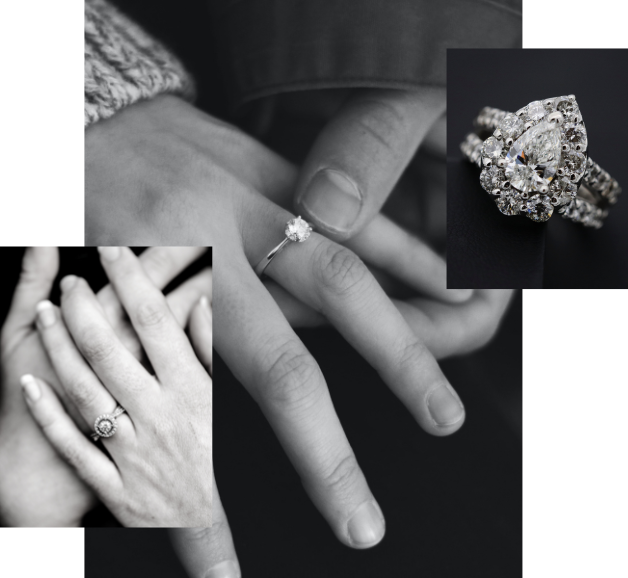
Round Brillant
The most common style of cutting both diamonds and colored stones.
The standard round brilliant consists of 57 facets: and a typical length to width ratio of 1:1

Emerald Cut
The Emerald cut is rectangular with cut corners and includes broad and flat planes that resemble stair steps when viewed from above. The crystal clear view which this shape has to offer may allow for inclusions and color to be more pronounced.

Cushion Cut
The last century's oldest design (also known as 'pillow-cut' diamonds) is available either in a square or rectangular shape, and includes rounded corners and larger facets to increase its brilliance.

Princess Cut
A relatively new shape, the princess cut generally has 70 to 76 facets.
The ideal princess cut diamond should be perfectly square. More rectangular ones will have a length-to-width ratio greater than 1.10.

Marquise Cut
The marquise cut is an elongated shape with pointed ends. This shape stands on its own as a solitaire.
The ideal marquise-cut diamonds should have length-to-width ratios between 1.75 and 2.25.

Oval Cut
Longer than the round. this perfectly symmetrical shape has a larger surface area than a round diamond with similar weight.
Oval brilliants usually have 56 or 57 facets.

Pear Cut
The pear shape is a brilliant cut. which means it has exactly 58 facets.
The form is inspired by the crystallisation of a pure and perfect drop of water and is also referred to as a tear drop.

Heart Cut
The heart cut is a sentimental representation of love. The heart's distinctive appearance contributes to its popularity as a wedding and engagement ring setting.
When combined with romantic accents and rose gold, this feminine design looks stunning.

Radiant Cut
This versatile design combines the brilliance of the round, the grace of the Emerald cut, and the panache of the Princess.
Square shaped Radiants should have a length-to-width ratio between 1 and 1.05








